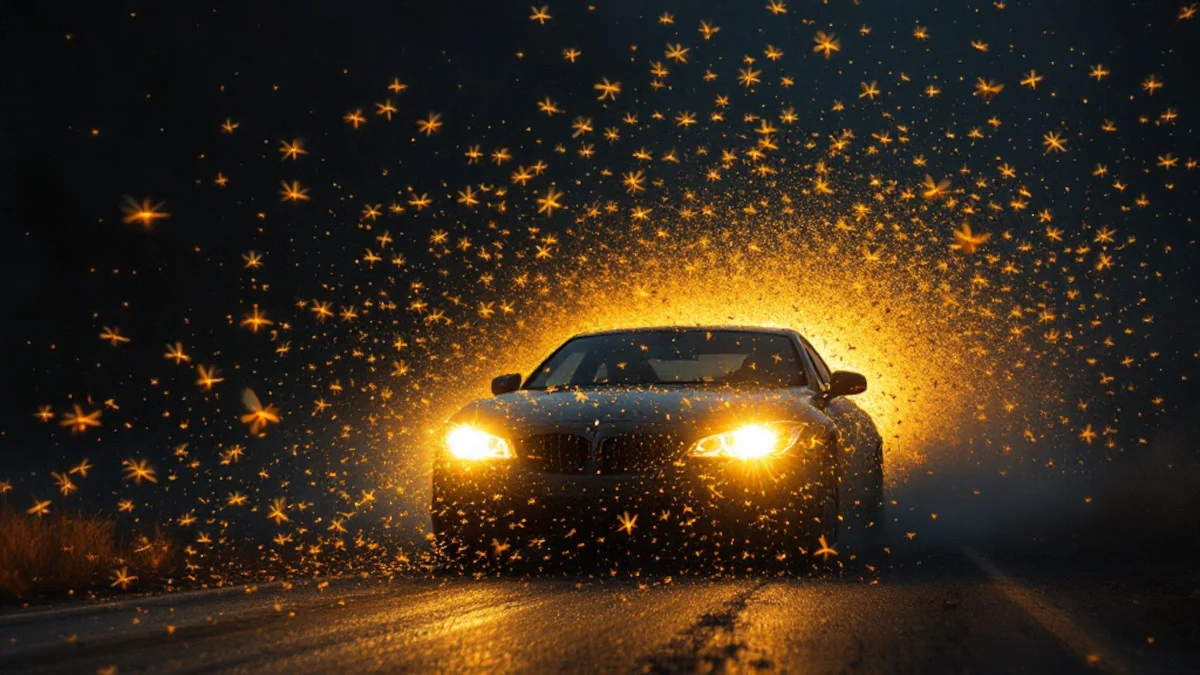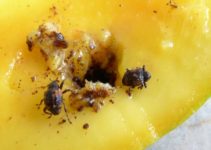Updated | September 22, 2025
This article demonstrates how deviating from a dull routine can lead one towards discovery. See how a shift in one’s behavior can produce unusual information. I listed 18 kinds of bugs attracted to light in our compact fluorescent ceiling lamp!
Table of Contents
The Phenomenon: Bugs Inside the Ceiling Lamp
One night, I noticed the ceiling lamp over our dining table got dimmer than usual.
When I looked up, I saw that the central part of the lamp had a dark shade of dirt that blocked the light from going through the glass cover. Ah, the pesky insects once again got trapped on the concave part of the round plate of glass.
I got an aluminum ladder and carefully removed the rounded nut of the three bolts that pinned the glass covering the metal holder.
When I held down the glass, the following mass of winged insects attracted by the light at night greeted me (Fig. 1).
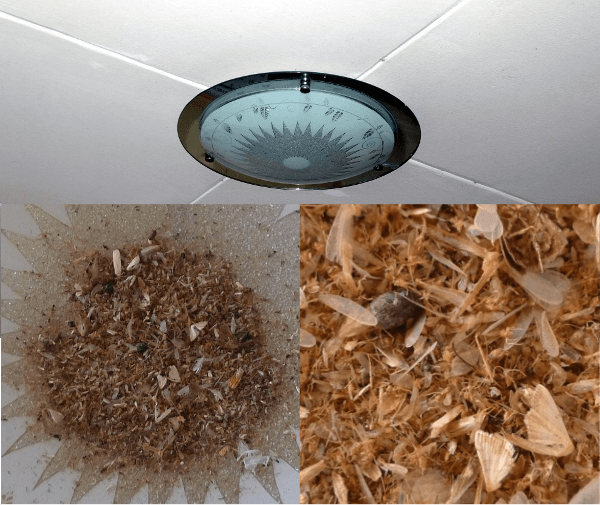
Remains of Bugs Attracted to Light Inside the Fixture
Instinctively, I walked towards the door to throw the “dirt” and clean the glass covering. My routine was to discard the mass of bugs collected inside the fixture in the ceiling right there and then, as I did previously.
On second thought, however, I paused and contemplated if I could make something out of this mass of apparently insignificant stuff. As a trained researcher, curiosity got the better of me. I want to find out what kinds of bugs are attracted to light at night. Perhaps no one cared to find out what’s in that messy stuff.
The information I will gain would be helpful in terms of the following:
- determine the time of the year that these bugs are predominant,
- understand the bugs’ life cycle for effective mitigation or control,
- count the number of species or kinds of bugs that are attracted to light, and
- understand the role that light plays in attracting bugs.
I discuss the answers to the last two concerns in the next section. The first two concerns take a bit of expertise in taxonomy and time. Let’s leave that to the entomologists.
I went out the other door towards the porch and laid the chaotic array of broken wings. As I did so, distinct shapes and sizes of insects came into focus as I ran my fingers through them.
18 Different Kinds of Bugs Attracted to Light
The picture below shows the 18 kinds of winged or flying insects and one identifiable material I discovered from the messy collection. I classified them according to morphology or appearance (Fig. 2).
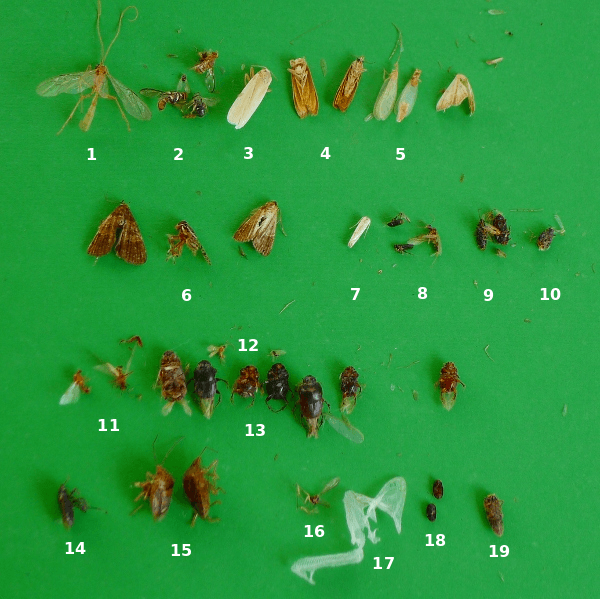
The pile of the material consisted of wasps, moths, winged termites and ants, moths, beetles, flies, plant bugs, among others. All identifiable stuff includes insects except no. 17 – a shed house lizard skin. I saw lizards feeding on most tiny bugs attracted to light at night.
However, the lizards did not consume all the bugs in sight. Perhaps they prefer some species over others? Or do these animals go for particular colors?
I saw them feed on moving bugs, not the dead ones.
As early as 1903, Pritchett (1903) noted that out of seven species of lizards studied, only once did a lizard eat a dead insect. Later studies did confirm that lizards do not eat dead bugs as a rule.
What species of bugs are attracted to light?
Wakefield et al. (2016) listed and analyzed 10 Orders of bugs attracted to light in their study in southern England. These groups include the following:
- flies, midges, gnats, and mosquitoes (Diptera);
- butterflies and moths (Lepidoptera);
- wasps, bees, sawflies, and ants (Hymenoptera);
- bed bugs, shield bugs, aphids, cicadas, planthoppers, leafhoppers (Hemiptera).
- beetles and weevils (Coleoptera);
- caddisflies (Trichoptera);
- barklice, booklice, or barkflies (Psocoptera);
- earwigs (Dermaptera),
- mayflies (Ephemeroptera); and
- lacewings (Neuroptera).
They compared different light bulbs to see which ones attract flying bugs more. They did find a difference, although some studies don’t say so.
Bugs Attracted to Light: CFL vs. LED
After reviewing the literature, I learned that compact fluorescent lamps (CFL) attract bugs. But light-emitting diodes (LEDs) light bulbs attract significantly fewer insects (Wakefield et al., 2016).
LEDs appear to be more environment-friendly. These technologies potentially avoid wildlife disturbances and promote human health, as these lighting fixtures attract fewer insects that serve as vectors or carriers of disease.
What Color Light Does Not Attract Bugs?
This article describes three color lights that do not attract bugs. Read on to find out.
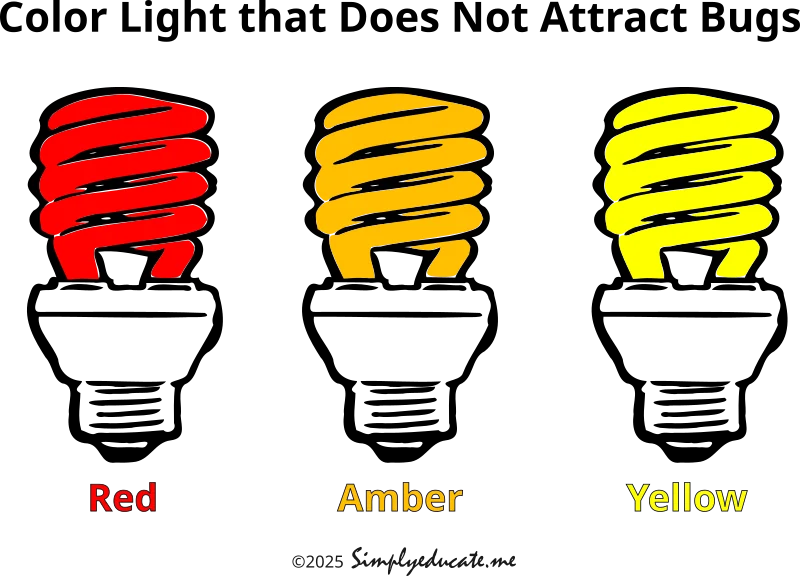
Reflections from the Discovery
As we always try to find meaning to what we observe, I posed a question in my mind about the relevance of the things I’ve seen. Are the things I’ve found of any value at all?
While this discovery may not be groundbreaking, I believe that I have supplied information found nowhere else in print or online. This information may be of significance to an entomologist. Since I wrote it in 2012, it is possible that an entomologist read it and conducted a study.
From what I could make out from this discovery, the collection of insects in the glass covering of the ceiling lamp represents the diversity of living organisms next to our place lying next to forested lots. These insects live and die in the often inundated “bangkal” (Nauclea orientalis) forest once marked by mounds as sources of flying termites.
These insects compose the forest ecosystem as intermediaries of nutrient cycling. They are agents that transport nutrients all over the place. Without insects, nutrients remain in the soil and will not be made available in the chain of predator and prey interactions. And these interactions influence human life (see the mango weevil story).
How significant are these insects to me?
Well, the bugs caused me to climb a ladder, take pictures, and clean the glass cover of the ceiling lamp—an opportunity cost. I should have been out somewhere. It has sparked a chain of events that changed my usual routine and made an online presence through this musing. And I gained enjoyment from my writing activity.
Key Takeaways
This activity is an exercise of being unconventional or thinking outside of the box. I broke a simple routine of just cleaning the “dirt” from the ceiling lamp. Being unconventional leads to discovery. This discovery leads to research questions that keep the scientific field brim with ideas to make life better for humankind.
Now, is there a way for us to address water scarcity in many parts of the world? Or perhaps, do research on how to live longer.
An inquisitive mind will bring you a long way.
© 2014 September 21 P. A. Regoniel
References
Pritchett, A. H. (1903). Some experiments in feeding lizards with protectively colored insects. The Biological Bulletin, 5(5), 271-287.
Wakefield, A., Broyles, M., Stone, E. L., Jones, G., & Harris, S. (2016). Experimentally comparing the attractiveness of domestic lights to insects: do LED s attract fewer insects than conventional light types? Ecology and evolution, 6(22), 8028-8036.
FAQ: What are the Tiny Bugs Attracted to Light at Night
Q1: What causes bugs to gather inside ceiling lamps?
Bugs are attracted to light sources at night, such as compact fluorescent ceiling lamps (CFLs). They fly toward the light and can get trapped inside fixtures.
Q2: How many kinds of bugs can be attracted to a ceiling lamp?
In this study, 18 different kinds of insects were found inside a single CFL ceiling lamp, including moths, beetles, flies, ants, termites, wasps, and even a shed house lizard skin.
Q3: Which species of bugs are commonly attracted to light?
Common groups include flies, mosquitoes, midges (Diptera), butterflies and moths (Lepidoptera), wasps, bees, ants (Hymenoptera), beetles (Coleoptera), shield bugs (Hemiptera), earwigs (Dermaptera), and lacewings (Neuroptera).
Q4: Do different light bulbs attract different amounts of bugs?
Yes. CFLs tend to attract more insects, while LED bulbs attract significantly fewer bugs, making them more environmentally friendly.
Q5: Why is it important to observe bugs attracted to light?
Studying these bugs helps understand insect diversity, their life cycles, and their role in ecosystems. It also provides insight for pest control and environmental monitoring.
Q6: Did lizards eat the bugs trapped in the lamp?
No, lizards typically feed on live, moving insects. Dead bugs, like those found in the ceiling lamp, are generally ignored by lizards.
Q7: Can this kind of observation contribute to scientific research?
Yes. Recording the types and number of insects attracted to light can offer useful data for entomologists, ecologists, and researchers studying ecosystems and insect behavior.
Q8: Why do LEDs attract fewer insects than CFLs?
LEDs emit different wavelengths of light, which are less attractive to many flying insects, reducing their impact on local wildlife and human health.
Q9: What are the broader implications of observing bugs attracted to light?
It can spark curiosity, unconventional thinking, and research questions. Observations of seemingly mundane phenomena can contribute to scientific understanding and inspire new studies.
Q10: Are there practical benefits to knowing which bugs are attracted to light?
Yes. It can help design insect-friendly lighting, mitigate pest problems, and improve knowledge about local biodiversity and ecosystem interactions.

